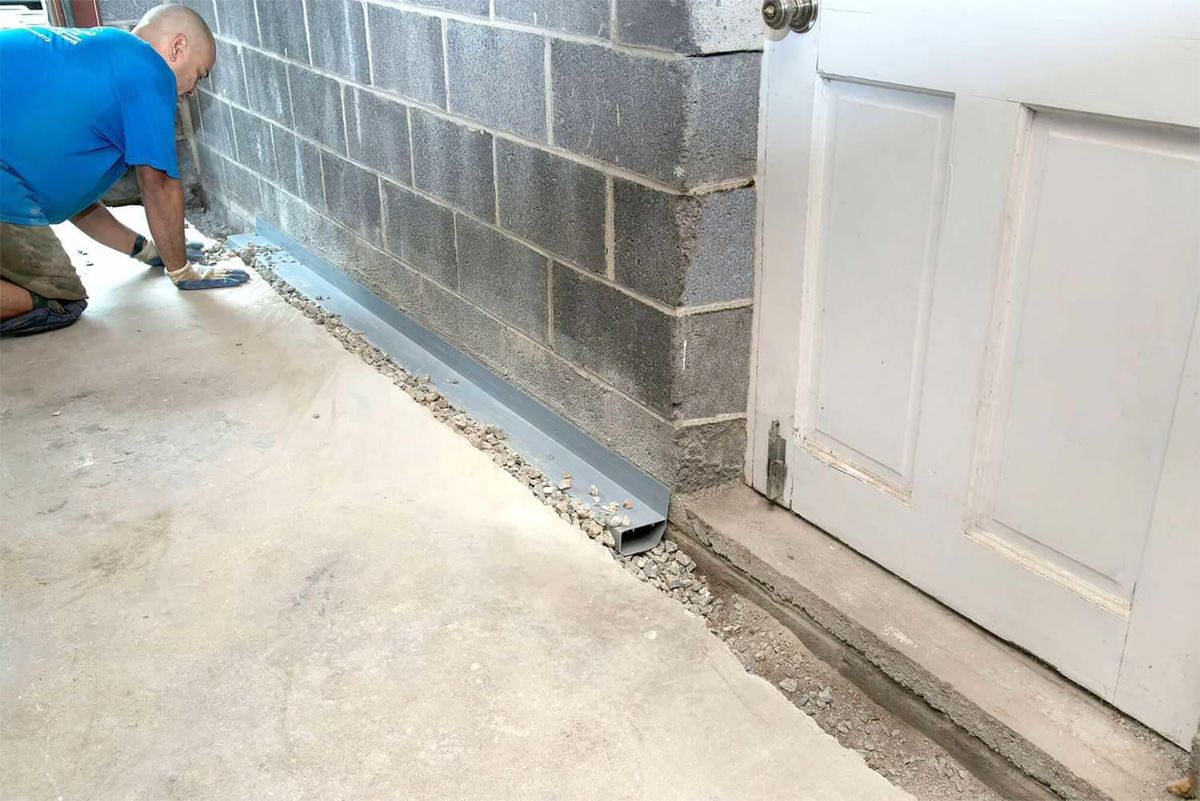PVC Drain Pipe: Why It Falls Short For Basement Waterproofing
For years, contractors who were hired to waterproof a basement have relied on "one size fits all" PVC pipe to direct water towards the sump pump system. Admittedly, this was a competent solution for many homeowners, and it established the groundwork for more advanced drainage systems to be developed.
As time passed, that's exactly what happened -- systems that were more advanced (and had more to offer) were created to meet homeowner demands and compete with other waterproofing specialists. Modern drainage systems are far superior to PVC pipe and have rendered it completely obsolete for basement waterproofing.
Shortcomings of PVC Drainage Systems
PVC drain pipe systems are designed to be installed underneath the basement floor, with a gap running along the edge of the basement wall. This gap remains open, collecting water from the floor, while the drain is pitched downward towards the sump pit using gravity to direct the water to the pump.
This design has three major flaws:
Must Be Installed Below The Basement Floor: While a typical basement allows for a system that's installed below the basement floor, a below-floor drain is not appropriate for all homes. Basements that use monolithic foundations (where the basement floor and foundation footer are poured in one piece) can make a below-floor drain system very labor-intensive to install, as the floor will be unusually thick around the basement wall perimeter. In other cases, the basement floor is just plain thick, presenting similar issues.
Must Be Installed In The "Mud Zone": PVC pipe is large and round. As such, it cannot be installed on top of the foundation footer. Barring this, the remaining option is to install the system further back, behind the footer and in the "mud zone" . This means that you have to remove much more of your floor than you would have to with a drain system that's fitted to rest on the foundation footing. That's more work for you, and more waste to remove. On top of that, placing a drain directly in the mud means that the mud will eventually get into the drain, which will then clog.
The Open Gap Along The Perimeter: Leaving a wide-open gap along the perimeter of the basement walls allows unwanted elements into your home, including humidity, odors, and radon gas. This gap also tends to fill with debris from the basement floor, which can lead to a clogged system.
Modern Basement Drain Systems
As waterproofers move away from PVC drain pipe, they begin to adopt drainage systems that are specialized for the specific issue they're solving.
Examples:
For Basements With Monolithic Floors: Since jack hammering the floor will create a lot of dust and take a lot of labor to complete, contractors will instead to choose a baseboard drainage system for this application. This can be adhered to the top of the basement floor -- not quite as attractive, but just as effective and far less expensive.
For Basements With Thin Floors: If the basement floor is too thin for a drainage system mounted on the foundation footing, then a two-part drain system can be installed. This involves placing the drain in the mud zone (not so labor-intensive for very thin floors), and running a wall flange to the drain. The wall flange will collect water from the walls, but without the large gap that is present in traditional PVC systems. To compensate for sitting in the "mud zone", drainage stone is laid on all sides of the drain system before the concrete floor is restored.
To Collect Water From Hatchway Doors: Many basements experience water flooding in through hatchway doors. In these situations, the drain can be run into the hatchway entryway, behind the closed door, and integrated with a section of drain that includes a grated opening. The opening will collect water, but is located outside of the door, so it does not add humidity or odors to the basement.
In Basements With Iron Ochre: If your basement has issues with iron bacteria and iron ochre, a typical drainage system can easily become clogged with this "slime". In these cases, your drain system will need a removable lid, so that the drain can easily be cleaned and maintained.
No matter what your basement needs, you will always be better off when choosing a customized drainage system over a traditional PVC pipe.
We Install Patented, Award-Winning Drainage Systems!
As your local Certified Basement Systems Dealer, Ayers Basement Systems has exclusive access to Basement Systems' complete line of warranted basement drain systems. We specialize in crawl space repair, sump pumps and basement waterproofing in Michigan! If you live in the Michigan area, near Lansing, Grand Rapids, Kalamazoo, Battle Creek, Portage, Kentwood, Cadillac, Wyoming, Holland, Walker, Muskegon, Mount Pleasant, Traverse City, or nearby, we have a solution for you! Contact us by phone or e-mail today for a free basement waterproofing estimate in Michigan!




